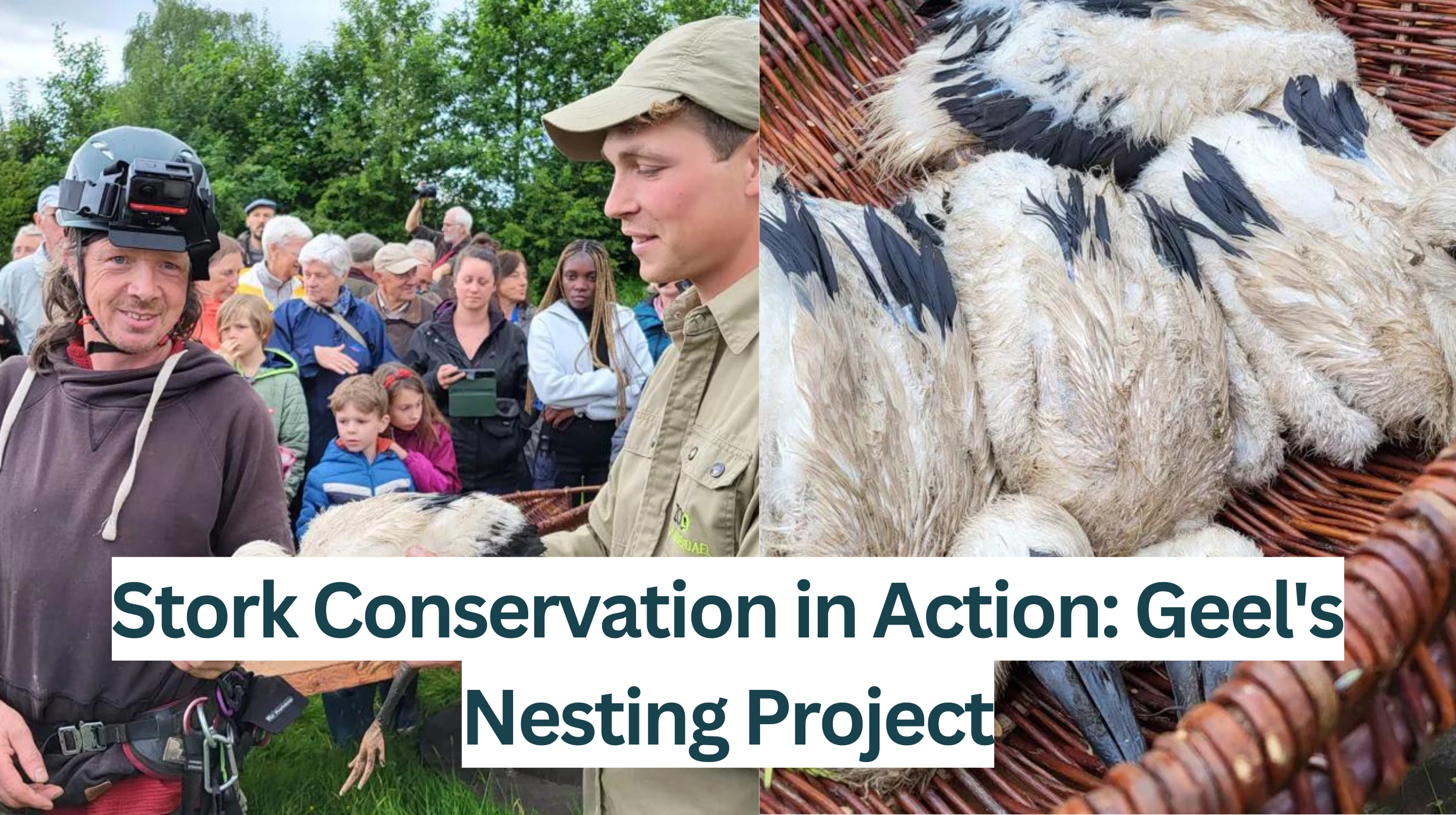Geel (Brussels Morning) – Storks returned to Geel, Belgium nesting successfully with five chicks. Conservation efforts include ringing chicks for tracking. Storks play a vital role in the local ecosystem.
At De Zegge in Geel a nesting post for storks was set up about four years ago leading to a yearly return of a flock to breed there . This year the storks had a record number of five chicks but one of them did not survive.
Ringing in Success: Tracking White Storks’ Journey to Survival
The ringing of stork chicks is an important conservation effort to track their movements and ensure their protection . In the case of De Zegge four of the five chicks were successfully ringed this year.
Ringing involves placing a coded metal ring on the left leg and a plastic ring on the right leg of each chick. The plastic ring is easier to read from a distance with binoculars allowing researchers to gather data on migration routes, nesting sites and dispersal behavior.
The successful ringing of the remaining four chicks at De Zegge is a positive step in the conservation of white storks in Belgium . The data collected from the rings will help experts learn more about the species and ensure their continued survival in the Region.
What Do Storks Do When They Return to De Zegge in Geel?
At De Zegge in Geel the staff put a special ring with a unique number on the stork chicks for identification. Pieter Dierckx one of the employees mentioned that when they climb up to the nest the storks stay calm. The parents fly around but return later. After about 8 to 9 weeks the young storks can fly. They usually stay in the nest a bit longer exploring the area. It’s like they take mental pictures of their birthplace.
The big birds specifically storks took a while to find a suitable location to raise their young. They returned to the area in 2021 after a prolonged absence drawn by the availability of food and a quiet environment conducive to nesting. The stork couple in charge of the rookery is protective of their territory and does not yet want to share it with other storks. Locals in the area have noticed the storks and have shared stories about them highlighting their unique behavior and the importance of the rookery to the local ecosystem



